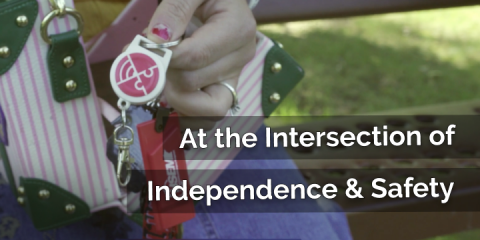At the Intersection of Independence & Safety

Many people think nothing of going out in the community to run errands, or engage in interests. For individuals with both seen and unseen disabilities or conditions (as well as their family members or caregivers), a real worry or anxiety may exist preventing independent outings.
“What if something happens and I’m not there to help control the situation?” or “What happens if I have a seizure while I’m out—how will I get help?”
Questions like these are now being answered by incorporating assistive technology devices used to increase access to the community for people with disabilities by increasing their confidence and ability to utilize natural supports. It all comes down to dignity of risk, of which Hammer Residences is no stranger.
Read the full case study on the TRC



